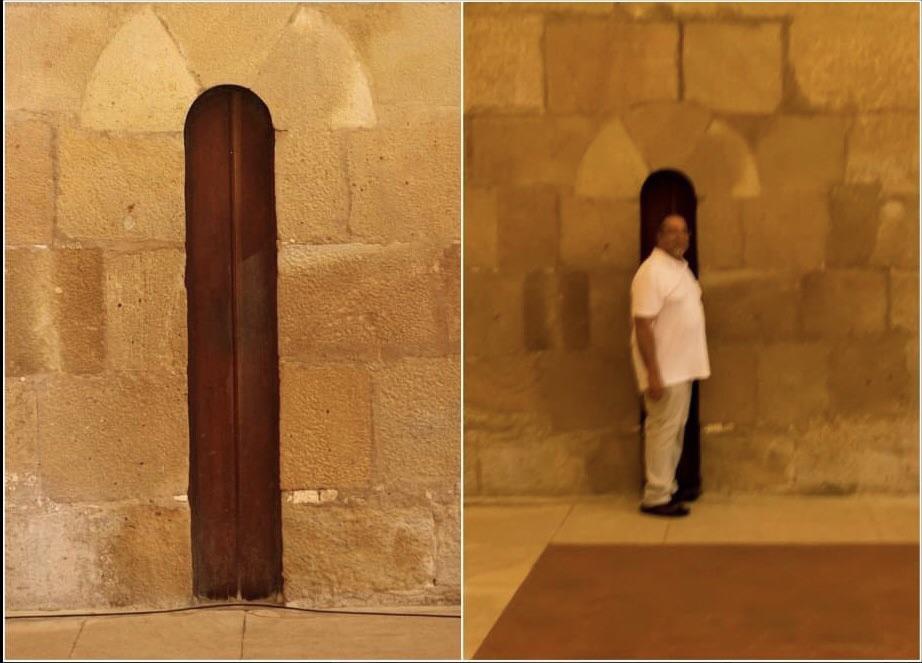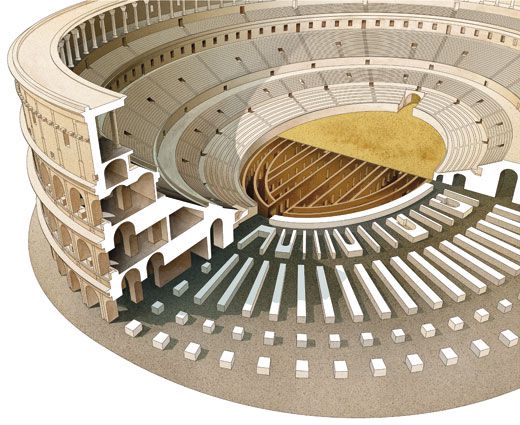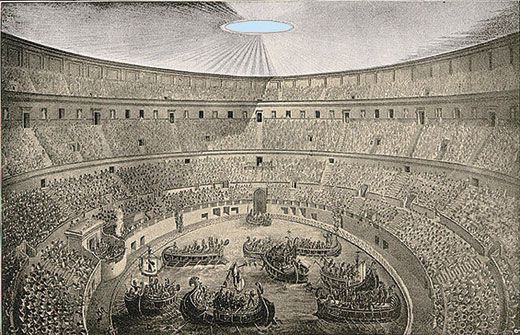When everybody had one or two vodkas and smoked a few joints, it was always the time for the blowgun. —John Giorno
From 1974 to 1982, writer William S. Burroughs lived in a former locker room of a 19th-century former-YMCA on New York City’s Lower East Side.
When he moved on, his stuff, including his worn out shoes, his gun mags, the typewriter on which he wrote Cities of the Red Night, and half of The Place of Dead Roads, a well-worn copy of The Medical Implications of Karate Blows, and a lamp made from a working Civil war-era rifle, remained.
His friend, neighbor, tourmate, and occasional lover, poet John Giorno preserved “The Bunker” largely as Burroughs had left it, and seems to delight in rehashing old times during a 2017 tour for the Louisiana Channel, above.
It’s hard to believe that Burroughs found Giorno to be “pathologically silent” in the early days of their acquaintance:
He just wouldn’t say anything. You could be there with him the whole evening, he wouldn’t say a word. It was not the shyness of youth, it was much more than that, it was a very deep lack of ability to communicate. Then he had cancer and after the operation that was completely reversed and now he is at times a compulsive talker, when he gets going there is no stopping him.
According to Burroughs’ companion, editor and literary executor, James Grauerholz, during this period in Burroughs’ life, “John was the person who contributed most to William’s care and upkeep and friendship and loved him.”
Giorno also prepared Burroughs’ favorite dish—bacon wrapped chicken—and joined him for target practice with the blowgun and a BB gun whose projectiles were forceful enough to penetrate a phonebook.
Proximity meant Giorno was well acquainted with the schedules that governed Burroughs’ life, from waking and writing, to his daily dose of methadone and first vodka-and-Coke of the day.
He was present for many dinner parties with famous friends including Andy Warhol, Lou Reed, Frank Zappa, Allen Ginsberg, Debbie Harry, Keith Haring, Jean-Michel Basquiat, and Patti Smith, who recalled visiting the Bunker in her National Book Award-winning memoir, Just Kids:
It was the street of winos and they would often have five cylindrical trash cans to keep warm, to cook, or light their cigarettes. You could look down the Bowery and see these fires glowing right to William’s door… he camped in the Bunker with his typewriter, his shotgun and his overcoat.
All Giorno had to do was walk upstairs to enjoy Burroughs’ company, but all other visitors were subjected to stringent security measures, as described by Victor Bockris in With William Burroughs: A Report from the Bunker:
To get into the Bunker one had to pass through three locked gates and a gray bulletproof metal door. To get through the gates you had to telephone from a nearby phone booth, at which point someone would come down and laboriously unlock, then relock three gates before leading you up the single flight of gray stone stairs to the ominous front door of William S. Burroughs’ headquarters.
Although Burroughs lived simply, he did make some modifications to his $250/month rental. He repainted the battleship gray floor white to counteract the lack of natural light. It’s pretty impregnable.
He also installed an Orgone Accumulator, the invention of psychoanalyst William Reich, who believed that spending time in the cabinet would improve the sitter’s mental, physical, and creative wellbeing by exposing them to a mysterious universal life force he dubbed orgone energy.
(“How could you get up in the morning with a hangover and go sit in one of these things?” Giorno chuckles. “The hangover is enough!”)
Included in the tour are excerpts of Giorno’s 1997 poem “The Death of William Burroughs.” Take it with a bit of salt, or an openness to the idea of astral body travel.
As per biographer Barry Miles, Burroughs died in the Lawrence Memorial Hospital ICU in Kansas, a day after suffering a heart attack. His only visitors were James Grauerholz, his assistant Tom Peschio, and Dean Ripa, a friend who’d been expected for dinner the night he fell ill.
Poetic license aside, the poem provides extra insight into the men’s friendship, and Burroughs’ time in the Bunker:
The Death of William Burroughs
by John Giorno
William died on August 2, 1997, Saturday at 6:01 in the
afternoon from complications from a massive heart attack
he’d had the day before. He was 83 years old. I was with
William Burroughs when he died, and it was one of the best
times I ever had with him.
Doing Tibetan Nyingma Buddhist meditation practices, I
absorbed William’s consciousness into my heart. It seemed as
a bright white light, blinding but muted, empty. I was the
vehicle, his consciousness passing through me. A gentle
shooting star came in my heart and up the central channel,
and out the top of my head to a pure field of great clarity
and bliss. It was very powerful—William Burroughs resting
in great equanimity, and the vast empty expanse of
primordial wisdom mind.
I was staying in William’s house, doing my meditation
practices for him, trying to maintain good conditions and
dissolve any obstacles that might be arising for him at that
very moment in the bardo. I was confident that William had
a high degree of realization, but he was not a completely
enlightened being. Lazy, alcoholic, junkie William. I didn’t
allow doubt to arise in my mind, even for an instant,
because it would allow doubt to arise in William’s mind.
Now, I had to do it for him.
What went into William Burroughs’ coffin with his dead body:
About ten in the morning on Tuesday, August 6, 1997,
James Grauerholz and Ira Silverberg came to William’s
house to pick out the clothes for the funeral director to put
on William’s corpse. His clothes were in a closet in my
room. And we picked the things to go into William’s coffin
and grave, accompanying him on his journey in the
underworld.
His most favorite gun, a 38 special snub-nose, fully loaded
with five shots. He called it, “The Snubby.” The gun was my
idea. “This is very important!” William always said you can
never be too well armed in any situation. Of his more than
80 world-class guns, it was his favorite. He often wore it on
his belt during the day, and slept with it, fully loaded, on
his right side, under the bed sheet, every night for fifteen
years.
Grey fedora. He always wore a hat when he went out. We
wanted his consciousness to feel perfectly at ease, dead.
His favorite cane, a sword cane made of hickory with a
light rosewood finish.
Sport jacket, black with a dark green tint. We rummaged
through the closet and it was the best of his shabby clothes,
and smelling sweet of him.
Blue jeans, the least worn ones were the only ones clean.
Red bandana. He always kept one in his back pocket.
Jockey underwear and socks.
Black shoes. The ones he wore when he performed. I
thought the old brown ones, that he wore all the time,
because they were comfortable. James Grauerholz insisted,
“There’s an old CIA slang that says getting a new
assignment is getting new shoes.”
White shirt. We had bought it in a men’s shop in Beverly
Hills in 1981 on The Red Night Tour. It was his best shirt,
all the others were a bit ragged, and even though it had
become tight, he’d lost a lot of weight, and we thought it
would fit. James said,” Don’t they slit it down the back
anyway.”
Necktie, blue, hand painted by William.
Moroccan vest, green velvet with gold brocade trim, given
him by Brion Gysin, twenty-five years before.
In his lapel button hole, the rosette of the French
government’s Commandeur des Arts et Lettres, and the
rosette of the American Academy of Arts and Letters,
honors which William very much appreciated.
A gold coin in his pants pocket. A gold 19th Century Indian
head five dollar piece, symbolizing all wealth. William
would have enough money to buy his way in the
underworld.
His eyeglasses in his outside breast pocket.
A ball point pen, the kind he always used. “He was a
writer!”, and sometimes wrote long hand.
A joint of really good grass.
Heroin. Before the funeral service, Grant Hart slipped a
small white paper packet into William’s pocket. “Nobody’s
going to bust him.” said Grant. William, bejeweled with all
his adornments, was traveling in the underworld.
I kissed him. An early LP album of us together, 1975, was
called Biting Off The Tongue Of A Corpse. I kissed him on
the lips, but I didn’t do it . . . and I should have.
Related Content:
Call Me Burroughs: Hear William S. Burroughs Read from Naked Lunch & The Soft Machine in His First Spoken Word Album (1965)
How William S. Burroughs Influenced Rock and Roll, from the 1960s to Today
William S. Burroughs’ Class on Writing Sources (1976)
Ayun Halliday is an author, illustrator, theater maker and Chief Primatologist of the East Village Inky zine. She most recently appeared as a French Canadian bear who travels to New York City in search of food and meaning in Greg Kotis’ short film, L’Ourse. Follow her @AyunHalliday









